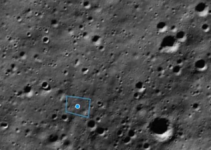Synopsis
Factors such as slopes, sun exposure, and communication were considered in selecting the landing site. A new hazard detection system will help ensure a soft touchdown, while a laser sensor will measure the craft’s velocity. Lessons from the previous Chandrayaan-2 mission have been incorporated to overcome challenges. The mission’s instruments will capture data on location, speed, altitude, and environment. Chandrayaan-3 represents a significant milestone for India’s space exploration efforts.
 Reuters
ReutersIn a historic stride towards space exploration, the Chandrayaan-3’s Lander Module (LM) is on the verge of achieving a gentle touchdown on the lunar surface, scheduled for 6.04pm this Wednesday.
Isro Space Applications Centre (SAC) director, Nilesh Desai, told TOI that meticulous considerations drove the choice of the landing site for Chandrayaan-3. Factors such as local and global slopes, sun exposure, radio communication, and crater and boulder sizes were pivotal in this selection process.
Excitement peaks with the introduction of an indigenous hazard detection and avoidance processing system, a technological marvel set to underpin the successful landing. This system will instantaneously transmit analyzed data from the Lander Hazard Detection and Avoidance Cameras (LHDAC), a quartet of essential instruments, ensuring a soft touchdown. According to Desai, this innovation is poised to reshape the game plan for upcoming missions like Ganganyaan and Mars landings.
The intricate landing operation is bolstered by the Laser Doppler Velocity (LDV) sensor, which discharges laser pulses towards the lunar terrain. By gauging the alterations in the reflected waves, the craft’s instantaneous velocity is deduced. Desai elucidated that 21 critical adjustments were enacted following Chandrayaan-2’s challenging landing experience.
Delving into the past, Desai recounted the issues that beset Chandrayaan-2, primarily a software glitch in the guidance algorithm that caused the lander’s excessive speed during descent. In the present mission, meticulous corrections have surmounted these obstacles, ensuring a smoother trajectory.
In the pursuit of a soft landing for the Vikram lander bearing the Pragyan rover, an array of instruments are strategically positioned onboard. These instruments work in tandem to capture data on parameters like location, speed, altitude, and environment. The suite comprises the Laser Inertial Referencing and Accelerometer Package (LIRAP) for orientation and acceleration data, the Ka-Band Altimeter (KaRA) employing radio waves to gauge distance from the Moon, the Lander Position Detection Camera (LPDC) capturing images of the landing site, the Laser Altimeter (LASA) utilizing laser pulses to determine altitude, LDV employing laser beams for velocity measurement, Lander Horizontal Velocity Camera (LHVC) documenting horizontal motion, Micro Star sensor identifying celestial bodies and their positions, and LHDAC detecting potential obstacles on the lunar surface.
( Originally published on Aug 22, 2023 )
(Catch all the Business News, Breaking News Events and Latest News Updates on The Economic Times.)
Download The Economic Times News App to get Daily Market Updates & Live Business News.
…moreless


